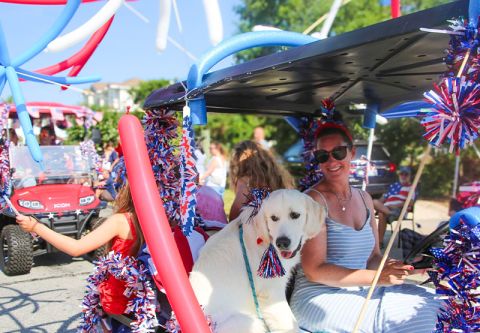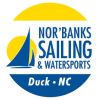
All communities have history, and some communities are fortunate enough to have history keepers, the people who preserve that place's stories. One such history keeper is Philip Howard of Ocracoke, an eighth-generation islander who's been there almost his entire life. Living in and among the restored homes of his ancestors, on a road that bears his family name, Philip experiences the island differently than the rest of us do. He sees the stories of Ocracoke’s past and how they relate to the present.
Consider the corner of Lawton Lane and Howard Street. At the junction of these two historic unpaved lanes is the parking area for Village Craftsmen, the much-loved gallery that Philip and his family founded in 1970. His daughter, Amy Howard, now manages the business with Philip’s enthusiastic support. While at this corner we see a place to park the bicycle or vehicle and enjoy stepping inside the gallery to browse its various rooms for handcrafts, Philip also sees something else. According to stories told to him by his father and grandfather, the corner of Lawton Lane and Howard Street is, for Philip, the site of the island’s first traffic accident. This story is documented online in Philip’s long-running Ocracoke Newsletter.
It starts out on the beach on August 22, 1925. Philip’s grandfather, Surfman Homer Howard, was on his regular U.S. Coast Guard beach patrol accompanied by his 14-year-old son, Lawton. As a surfman, it was Homer’s job to look seaward for signs of ocean-going vessels in distress in the currents, winds and shoals off of Ocracoke Island.

Toward the end of this particular patrol, Homer noticed a four-masted schooner sailing south. Before too long he and Lawton watched the ship turn north, then south again, then north once more. Highly strange activity for such a large ship. But the ship was not in trouble, not yet. However, it was the end of Homer’s shift, so another surfman took over the patrol, and Homer and Lawton returned to the village. Early the next day, August 23, the call “ship ashore” rang out at the Coast Guard station. The vessel, the Victoras S, had wrecked and was hard aground in the breakers on Ocracoke beach. Homer and the other surfmen rescued all seven sailors while the Victoria S slowly broke apart in the surf, spilling its cargo of pine lumber onto the beach.
The owners of the cargo sent an agent to Ocracoke in early September of 1925 to coordinate salvage operations, which required moving the lumber from the ocean beach, traveling through the village to a steamer waiting at a dock on the shore of Pamlico Sound.
At this time in 1925, there were only two gasoline-powered vehicles on the island – Bill Gaskill’s flatbed truck and Albert Styron’s truck – so these two men were hired to transport the lumber from the beach to the soundside dock. The obvious route to take was the main thoroughfare through town, which at the time was the one-lane, soft-sand road known today as Howard Street.
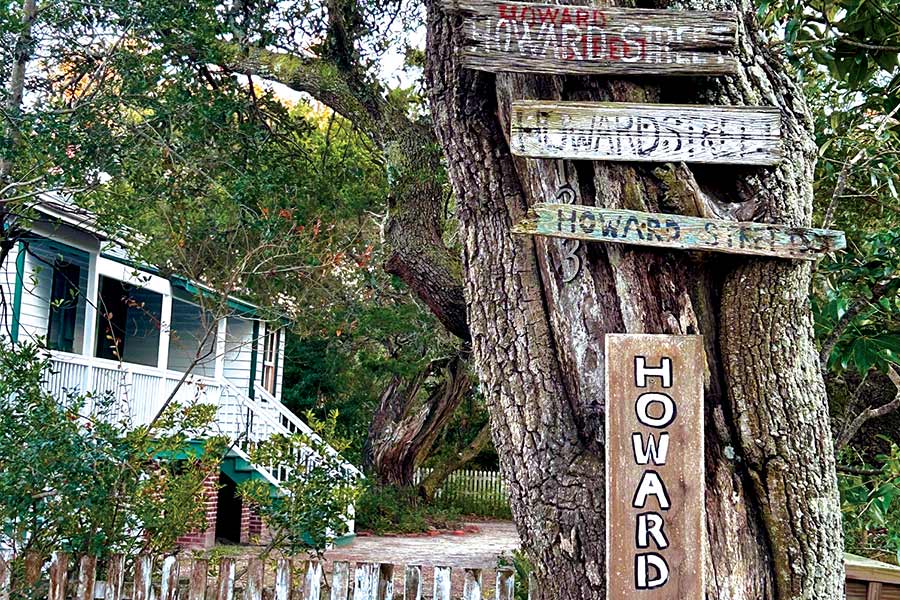
The following excerpt from Philip’s August 26, 2008, Ocracoke Newsletter explains what happened:
“In front of Stacy and Elizabeth Howard’s home, the road made a sharp bend, and there the loose sand was especially deep. To negotiate the curve without getting stuck, the drivers of the model-T trucks, equipped with narrow rubber tires, needed to accelerate as they approached and maintain their speed as they rounded the blind bend.
“Captain Bill had just loaded his truck at the beach. Piled with lumber, his vehicle was traveling west. Mr. Albert had just unloaded his truck at the steamer and was returning to the beach, heading east. Both drivers approached the curve in front of Stacy and Elizabeth’s house at the same time. Both gunned their engines and rounded the bend simultaneously. “And that’s how it happened that Ocracoke experienced its first traffic accident, in early September of 1925, a head-on collision, with only two vehicles on the island!”
Stories like these are alive and well on this little island, and Philip loves to share them. In 2000 he started the monthly Ocracoke Newsletter featuring in-depth articles on local subjects, and in 2004 he added a daily blog, Ocracoke Journal. His thousands of entries can be read at VillageCraftsmen.com.
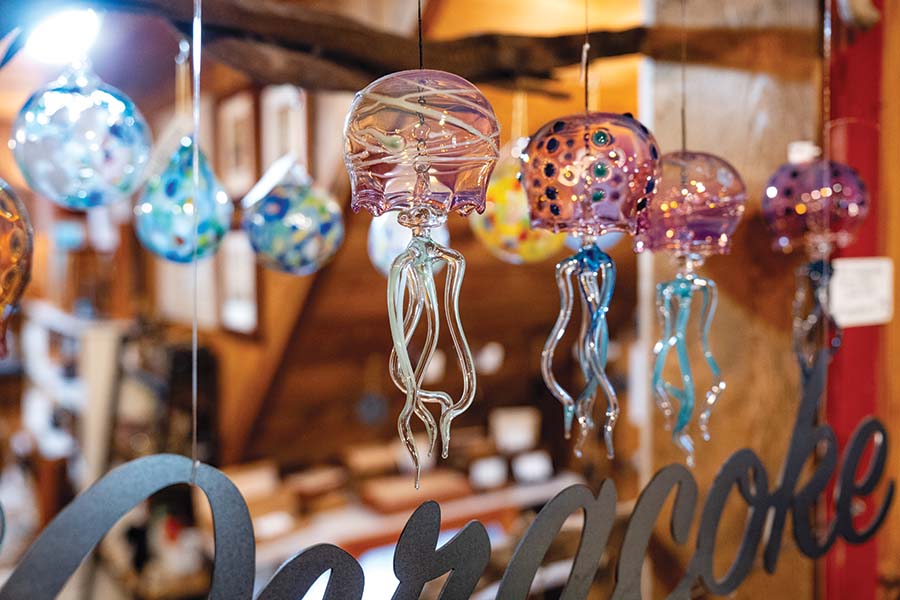
Philip has also published three books of Ocracoke stories – Digging Up Uncle Evans, Howard Street Hauntings and Ocracoke Island Eccentrics, Innovators, and Free Spirits – which are sold at Village Craftsmen. He is currently working on a fourth book, which will be available in early 2025.
As Philip reduces his public engagements, Amy and her husband, David Tweedie, have assumed the role of sharing the stories of Ocracoke during their Ghost and History Walks, held twice a week in the summer season, as well as weekly storytelling events on the beach through Ocracoke Beach Fires.
With such deep roots on the island, the stories flow from the Howard family. Whether you’re enjoying one of their storytelling events, reading one of Philip’s books or shopping for fine U.S. handcrafts in their long-established gallery, when you’re connected to the Howard family, you’re deeply connected to the roots of Ocracoke Island.
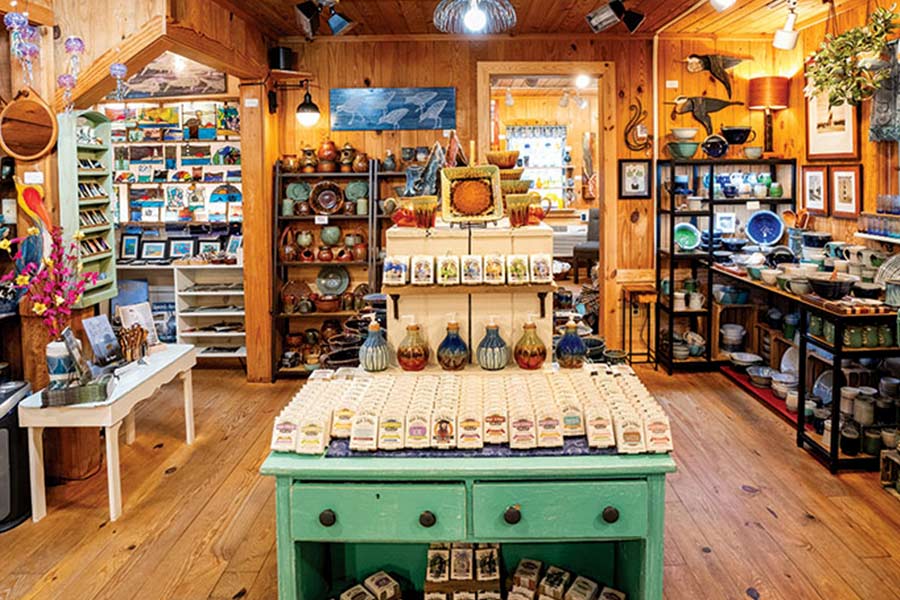
(252) 928-5541 (text)
info@villagecraftsmen.com
170 Howard Street, Ocracoke
VillageCraftsmen.com


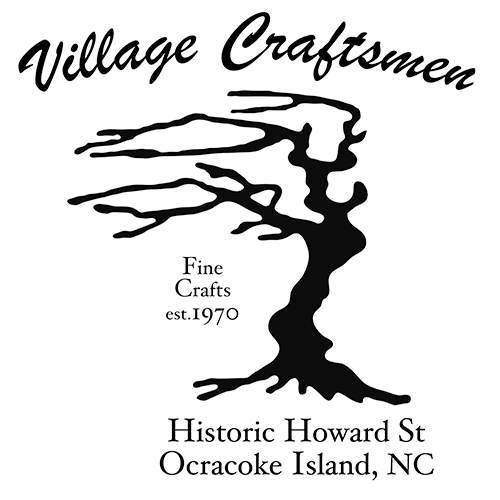
 Molly Harrison is managing editor at OneBoat, publisher of OuterBanksThisWeek.com. She moved to Nags Head in 1994 and since then has made her living writing articles and creating publications about the people, places and culture of the Outer Banks.
Molly Harrison is managing editor at OneBoat, publisher of OuterBanksThisWeek.com. She moved to Nags Head in 1994 and since then has made her living writing articles and creating publications about the people, places and culture of the Outer Banks.


